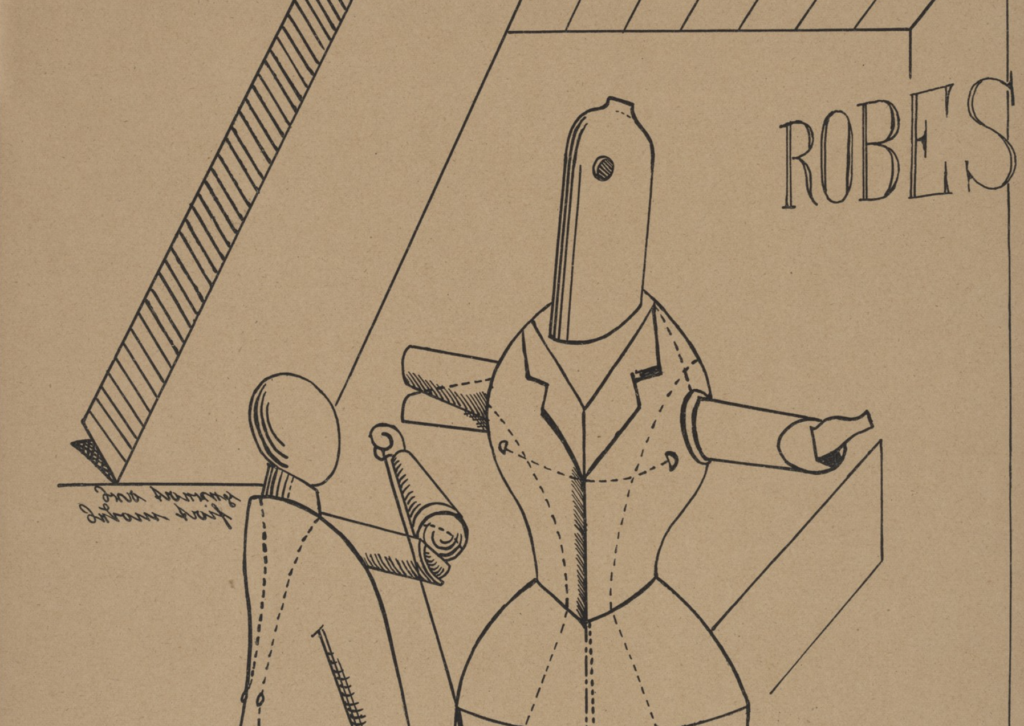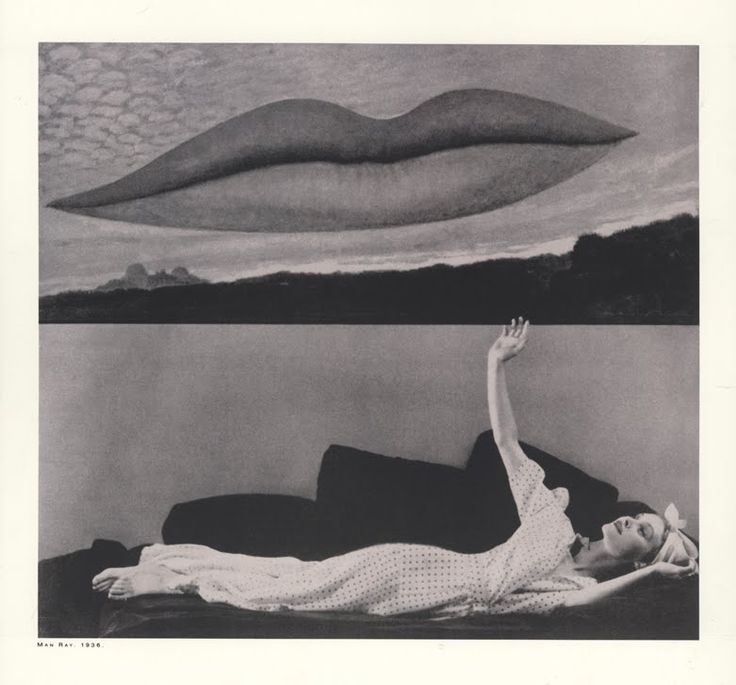Fashion, Envy & the Gift (1985)

Graham, Robert. (1985). Fashion, Envy & the Gift. Parachute, 40, pp. 25-27. Retrieved from https://numerique.banq.qc.ca/patrimoine/details/52327/3645270The problem of the counterfeit (and of fashion) was born with the Renais sance, with the dé structuration of the feudal order and the emergence of open competition at the level of distinctive signs…
With the end of the bound sign, the reign of the emanci pated sign begins, in which all classes eventually acquire the power to partici pate. Competitive democracy succeeds the endogamy of the sign proper to orders of status.
With the transition of the sign-values of prestige from one class to another, we enter the world of the counterfeit in a stroke, passing from a limited order of signs, where taboos inhibit “free” pro duction, to a prolif eration of signs ac cording to demand.
Jean Baudrillard 1
While there is strong appeal to a sociology of art which acknowledges the “ network of cooperation”2 between “canonic” artistic activity and such para-artistic activities as design, adver tising, media, crafts and fashion, the resultant broadening of perspective must present more than a mosaic vision of contiguous, delineated professions, “a sociology of occupations applied to artistic work.” 3 The congress between domains and the capacity for practitioners to pass from one to the other are not without interest or revealing significance. Yet while fashion is the name of an industry, it is also the invocation of an attitude — trivial, vain, competing, inventive without progress, a vice of prosperity and the antithesis of art4. Beyond the model of cloisonistic sociology — a picture of bordering spheres with occasional trade links — the present situation requires the recognition of the tightness between the realms, the man ners of compounding and mutual transformation. Fashion and art are thick with each other, with fashion providing itself as one of the major engines to contemporary art. If, for Baudrillard, the accelerated and pervasive traffic in signs represents the triumph of the code over meaning, signification, the natural or real, then fashion (in both its everyday and complex senses) becomes metonym for the guiding and shaping pattern of our relation ship with art. In facing up to fashion we confront the alluring formation (and deformation) of contemporary art exchange.
The force of fashion within art shapes art to the character of fashion. As a form of patronage, fashion embraces art in the application of selective misunderstandings. Fashion is quick to judge favorably and, in a fierce parody of vanguardism, encourages competitve novelty in its rapid accep tance and abandonment. The fashionable personality seeks in art instruments of diversion and amusement in the struggle against boredom. Art fit for fashion provides a mix of the familiar and the strange to satisfy the double longings for both the comfort of comprehension and the prestige of esoteric knowledge. Socially consensual, fashion relies on the evaluative shortcut of reputation (“seeing with your ears”).
The transformative power of fashion is glamour. As the novelist Robertson Davies has reminded us, glamour originally meant magic, enchantment and spell, especially in the sense of creating illusion, “casting glamour over the eyes.” “Glamour,” said General Idea, “is the interface between nature and culture.” And then, in their famous 1975 manifesto: ‘‘We wanted to be famous, glamorous and rich. That is to say we wanted to be artists and we knew that if we were famous and glamorous we could say we were artists and we would be … We did and we are. We are famous, glamorous artists.”5
As good students of structuralism, the boys of G.l. knew that, “Quesalid did not become a great shaman because he cured his patients; he cured his patients because he had become a great shaman.”6 This playful insult to the logic of cause and effect is a mark of the wizard, a recognition that pretense is the ambitious larval stage of future verification and acceptance: their reputation preceded them. ‘‘Finality is no longer located at the conclusion; indeed, there is no end, and deter mination is out. The finalities are established in advance, inscribed in the code.” 7 Reversing cause and effect or having effects without causes is, in terms of value, considered fraudulent: selling what you do not possess. Embedded in the notion of fashion is the fear and suspicion that what is ‘‘all the rage” is a fit of delusion. The decision is to risk being out of tune now as against the possibility of being embarassed in some future retrospect — you pick the shame of your choice. (But then, of course, fashion encourages short memories — there are no haunting pasts).
In its fluidity, fashion provides a tremendous arena for social mobility and its fickleness resists the establishment of durable power figures. Yet in making solidarity with the successful, fashion is supported by the synchronic equivalent of tradition — ‘‘received ideas” from the side (the fashionable have strong peripheral vision). The emphasis on public display melds with a primary form of contemporary enfranchisement — the getting of attention.

Publicity is about social relations, not objects. Its promise is not of pleasure, but of happiness: hap piness as judged from the outside by others. The happiness of being envied is glamour. (…) Glamour cannot exist without personal social envy being a common and widespread emotion.
John Berger 8
Berger’s statement can be amplified: even objects are not just about objects, but about relationships. Melanie Klein, pioneer member of the “British” or “object-relations” school of psychoanalysis, developed a thesis concerning objects and envy which illumines the conditions of exchange operating under the influence of glamour 9.
From infancy and the primary envy of the feeding breast, the envious person is inflicted with anxieties of persecution and guilt and transforms the good into the bad, spoils and devalues what is received by attacking the source, is destructive and rivalrous and demands with an insatiable appetite. Alternatively, Klein presents a model of gratitude, in which a good object relationship provides gratifica tion and enjoyment under conditions of trust. Healthy terms of projection and introjection en courage preservation and generosity in response to received nourishment 10.
Under the economy of the sign, the sub-economies of gift and market parallel the object-relation exchanges of art and fashion11. The market of scar city (fashionability cannot be universal) distributes unevenly what begins to depreciate as soon as it is received. Allure breaks down as the object extends beyond its originating coterie. In the plenitude of gift exchange, generosity (the fullness and freedom in which the work is produced, given) and gratitude (the fullness of its reception) increase abundance and satisfaction.
Even if it were possible, the spirit of fashion should not be banished from art. Playful and irresponsi ble curiosity opens up the possibility for new work, including the good and valid. There is little virtue in impoverishing the scene by trying to split off unseemly drives. We must begin, like Brecht, with the bad and the new.
Fashion and art meet in the image of the manne quin. From Max Ernst’s Fiat Modes — Pereat Ars (1919) to Miss General Idea herself, the manne quin is the idealized object brought to life by our projections. She is as obedient as a corpse, empty, docile: a true plastic beauty. As a fantasy of absolute receptivity she sustains us with what we seek.
Notes
1. Jean Baudrillard, “The Structural Law of Value and the Order of the Simulacra,” in The Structural Allegory, ed. by John Fekete (Minneapolis: Univ. of Minnesota Press, 1984), pp. 61-2.
2. Howard S. Becker, Art Worlds, (Berkeley: Univ. of Calif. Press, 1982), p. xi.
3. Idem.
4. “In entering bourgeois life, artistic and literary taste — like aesthetic doctrines, like philosophic and even scientific theories — falls under the tyranny of fashion: of despotic fashion, which does not admit personal judgements; of capricious fashion, which condemns today the style it impos ed yesterday, precisely because it succeeded in imposing it; of bourgeois fashion, finally, which insists on being ‘distinguished’ or set apart in some way. (…) They would no longer be bourgeois, if they prized beauty more highly than ‘distinction’ and fashion.” Edmond Goblot, Cultural Educa tion as a Middle-Class Enclave, first published in 1925, ex cerpted in Sociology of Literature and Drama, ed. by Elizabeth and Tom Burns (Harmondsworth: Penguin, 1973), pp. 441-4.
5. Reprinted in FILE, Vol. 6, Nos. 1 & 2, 1984, p. 76.
6. Claude Lévi-Strauss, Structural Anthropology, (Garden City: Anchor Books, 1967), p. 174.
7. Baudrillard, p. 66.
8. John Berger, Ways of Seeing, (Hardmondsworth: Penguin, 1972), pp. 132 & 148.
9. For an essay which brings together both Baudrillard and Klein, see Charles Levin, “Baudrillard, Critical Theory and Psychoanalysis,” in Canadian Journal of Political and Social Theory, Vol. 8, Nos. 1-2, (Winter-Spring, 1984).
10. Melanie Klein, Envy and Gratitude & Other Works 1946-1963, (New York: Delta, 1975), pp. 176-235.
11. See Lewis Hyde, The Gift: Imagination and the Erotic Life of Property, (New York: Vintage, 1983).
La scène artistique contemporaine est façonnée et animée par l’esprit de la mode qui, par son côté glamour et par sa recherche de nouveauté, donne souffle à l’activité artistique. En même temps, cependant, ces conditions créent des règles d’échange à base d’exclusion et d’envie qui empê chent de faire, avec l’art, l’expérience du don. Il ne s’agit pas pour autant de condamner la mode, mais de bien voir qu’elle est une composante de notre situation.
Robert Graham is an art critic living in Montreal.